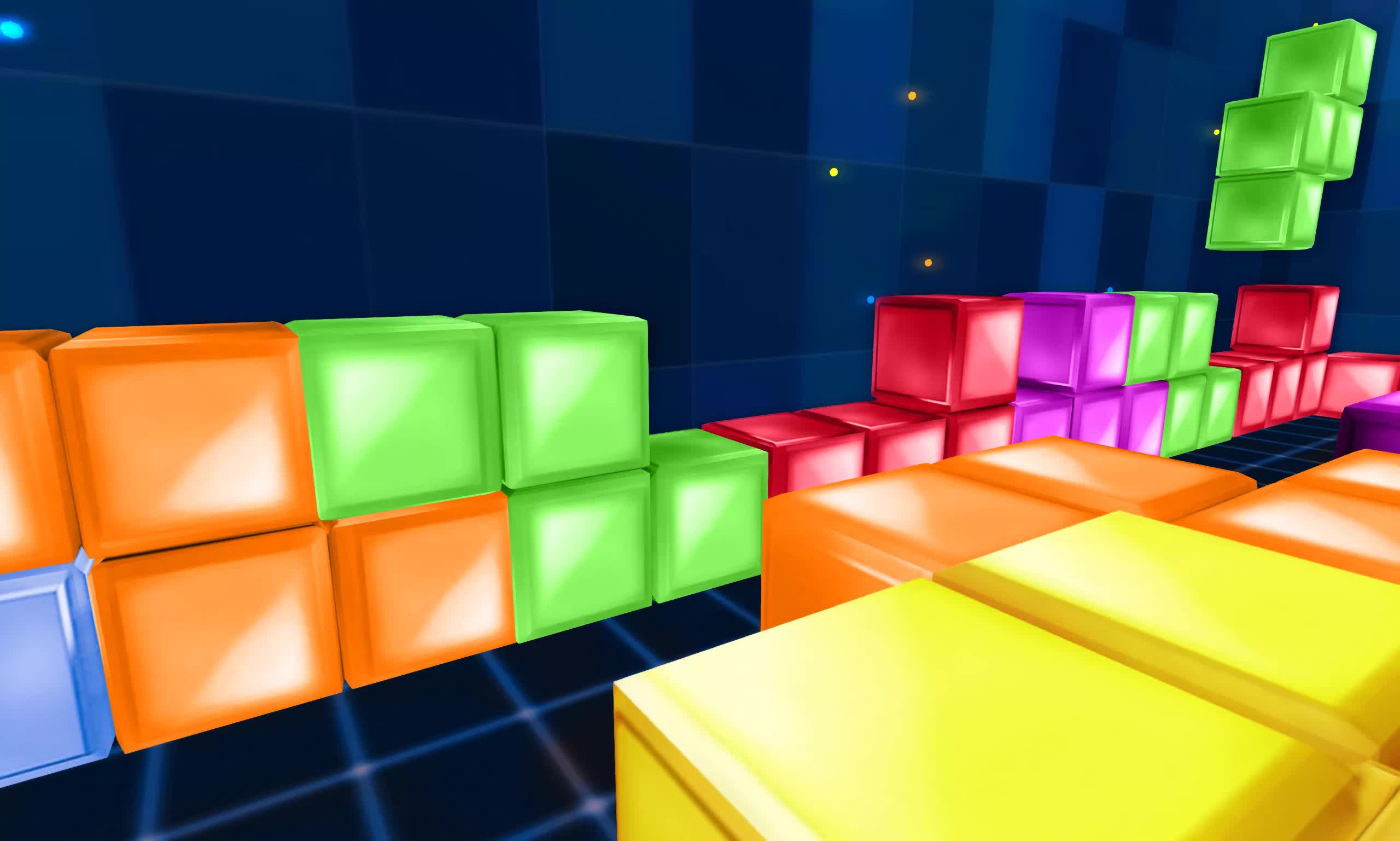In a nutshell: A crafty group of gamers has found a way to slip custom code into unmodified copies of classic puzzler Tetris on the original Nintendo Entertainment System. It's an exploit that opens up new possibilities for one of gaming's most iconic titles.
The breakthrough, demonstrated in a recent video by Displaced Gamers, takes advantage of the infamous "kill screen" and a quirk in how the Japanese Famicom version of Tetris handles controller inputs to manipulate the game's memory in an unexpected way. To learn more about how this kill screen is triggered, check out this 13-year-old's achievement.
When Tetris crashes on level 155 or higher due to an overflow error, a portion of the game's code gets interrupted by the routine to draw the next frame. This causes it to jump to an unintended section of RAM to look for its next instructions.
Normally, this unexpected interrupt would cause the code to jump to the very start of RAM, reading garbage data as instructions and quickly crashing. But by holding down specific button combinations as the crash occurs, players can precisely control where that wayward jump lands. With the right inputs, they can redirect the code to the area of RAM holding the game's high score tables.
From there, it's a matter of encoding custom opcodes (machine instructions) as values in those tables. While limited to just letters, numbers, and a few symbols, skilled hackers can set up miniature programs to run within Tetris' established code and memory space. One proof-of-concept even tweaks the score calculation to temporarily prevent further crashes.
The limited character set in the high-score tables makes injecting substantial programs challenging. But the community has seemingly devised methods to chain multiple table entries together, bootstrapping increasingly complex code overlays. With full control of the game's RAM, the possibilities become expansive.
The method is quite complicated and makes you wonder how it was even figured out. But with it, in theory, one could rewrite core game aspects, like even patching out the "kill screen" that triggers this exploit in the first place.
Executing these hacks does require achieving the high scores manually, then entering the values each time since NES carts lack battery-backed storage. Still, the ability to not just deeply understand but unlock new unintended capabilities in a decades-old game is an impressive feat of obsessive hardware tinkering.
